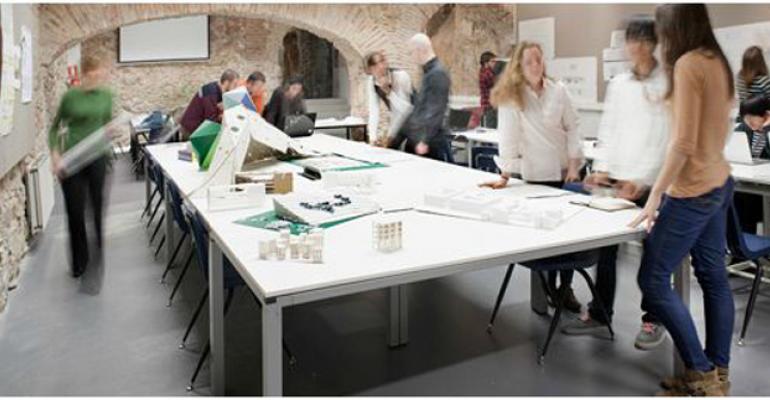The cubicle farm is on the way out. Now that hiring is up again, workplace strategy experts say that most companies want to implement collaborative office designs to attract professional talent.
The tech explosion, with nearly everyone on the planet expected to have a cell phone by 2020, has reduced the time that workers need to spend at their desks to complete tasks. New work arrangements, such as telecommuting and desk sharing, have allowed firms to reduce the amount of office space they need. However, a few large firms have recently reversed gears and pulled workers back into their chairs.
That’s okay, the office experts say: the traditional office is in on its way out, and coming into style are offices that bring the freedom inside, with new floor layouts and furniture designs that support a multitude of work styles.
According to a recent survey by real estate services firm JLL, nearly 70 percent of 544 corporate real estate executives polled say their companies are seeing increased demand for efficient workplace designs that encourage employee collaboration. The requested changes include more ways to enable flexible working and to support attitude changes toward office space.
Bernice Boucher, head of workplace strategy in the Americas for JLL, says there are a number of explanations for the new office space revolution. Managers want to create the most collaborative and innovative offices they can to attract the Millennial generation, which demands more work flexibility than employees from years past. Boucher says the trick is to wow these employees with up-to-the-minute technology and freedom of movement to make them gladly work in or out of the office.
“I’ve had all these companies, many technology firms, but also banks, pharmaceuticals, government contractors, tell me that they’re competing with Google, there’s the belief that new talent all want to work there, and the companies want to try to gain the same reputation,” she says. “That requires evolution in the workplace. New employees coming in who don’t want the office technology, they’d rather use their own, or the creation of collaborative spaces put together, like neighborhoods, where teams can be invested in a space rather than assigned to a bunch of cubicles.”
One example is a Fortune 100 firm with an office in the Washington, D.C. area that couldn’t figure out why potential employees weren’t showing up for interviews, Boucher notes. The company eventually invested millions of dollars into a lobby redesign, she says, when executives realized that candidates were walking in, looking at the lobby, and walking out in disgust before even going into the office.
The new trends apply to the financial side of leases as well, Boucher says. “Technology that used to take years to update now completely changes in one year, but your typical lease is what, five or 10 years? Already by year two through five you’re obsolete. This calls for flexibility when planning space. It’s not just about shaving off 10,000 square feet and squeezing people in,” Boucher says.
Elie Finegold, senior vice president of global innovation and business intelligence at CBRE Group, says technology has radically changed how and where people choose to work. The workday is no longer 9 a.m. to 5 p.m., but rather 9 a.m. to 11 p.m., or 7 a.m. to 5 p.m., as connected employees work from home or on their commute. Where some CEO’s feared teleworkers would goof off, that teleworker is more likely to work extra hours than an office employee, Finegold says.
“People are actually happier to work this way, they like the freedom,” Finegold says. “It’s like the years before offices, like farmers who worked at their own pace and quit when it was done, not at a time-clock, and it lets them be with their families more. Plus, every communication is more traceable, so you know the work is getting done.”
Even CBRE has adopted the new style, he says. Offices at the firm are being retrofitted to provide collaborative spaces, such as casual work areas, focused areas and spaces with amenities, such as a coffee bar where discussions can take place. “We’re actually reducing the square footage per head, but it doesn’t feel like it,” Finegold says.

